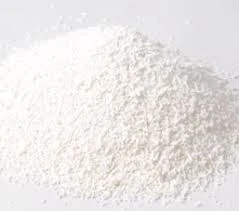
Current Market Trends and pricing analysis of Aluminum Hydroxide in the Chemical Industry
The Price of Aluminum Hydroxide Trends and Factors Influencing the Market
Aluminum hydroxide, a versatile compound with the chemical formula Al(OH)₃, plays a pivotal role in various industries, ranging from aluminum production to pharmaceuticals and water treatment. The price of aluminum hydroxide is influenced by a myriad of factors that affect its demand and supply dynamics. Understanding these trends is crucial for businesses and stakeholders involved in its production and consumption.
Market Overview
The global market for aluminum hydroxide has been witnessing steady growth due to the increasing demand in various applications. The rise in aluminum metal production, particularly in developing countries, has driven the need for aluminum hydroxide as it acts as a precursor in the Bayer process for extracting aluminum. Moreover, the construction and automotive industries are burgeoning, resulting in an uptick in demand for aluminum-based materials, which, in turn, impacts the price of aluminum hydroxide.
Pricing Trends
Historically, aluminum hydroxide prices have been relatively stable, but fluctuations do occur based on market conditions. Over the past few years, there has been a noticeable increase in prices attributed to several key factors. For instance, increased production costs, primarily from energy prices and raw material sourcing, have resulted in higher selling prices for manufacturers. Furthermore, disruptions in the supply chain, such as those caused by the COVID-19 pandemic, have also squeezed the supply of aluminum hydroxide, contributing to price volatility.
Factors Influencing Prices
1. Raw Material Costs The extraction and processing of bauxite, the primary raw material for aluminum hydroxide, directly impact its price. Any changes in the availability or price of bauxite can lead to fluctuations in aluminum hydroxide prices.
aluminum hydroxide price

2. Energy Costs The production of aluminum hydroxide is energy-intensive. As energy prices rise, manufacturers may pass on these costs to consumers, leading to increased prices for aluminum hydroxide.
3. Demand from End-Use Industries The demand in key sectors such as water treatment, pharmaceuticals, and cosmetics influences pricing. For instance, as water quality regulations become more stringent globally, the adoption of aluminum hydroxide in flocculation processes is likely to rise, thus increasing its price.
4. Global Economic Conditions Economic growth, especially in emerging markets, often correlates with increased construction and manufacturing activities, which can drive up the demand for aluminum hydroxide. Conversely, economic downturns can lead to decreased consumption and lower prices.
5. Environmental Regulations The aluminum industry is increasingly affected by environmental regulations aimed at reducing carbon emissions. Compliance costs associated with these regulations can affect production costs and, subsequently, the pricing of aluminum hydroxide.
Future Outlook
Looking ahead, the price of aluminum hydroxide is expected to remain influenced by the ongoing trends in both the supply chain and end-user demand. With the global push towards sustainability and green technology, the role of aluminum and its derivatives, including aluminum hydroxide, will likely expand. Innovations in production technologies and recycling may also alter supply dynamics, potentially stabilizing or even reducing costs in the long run.
In conclusion, the aluminum hydroxide market is multifaceted, with prices influenced by a combination of production costs, demand from various sectors, and broader economic factors. Stakeholders must keep a keen eye on these trends to navigate the complexities of this essential compound effectively. As industries evolve and adapt in response to consumer demands and regulatory standards, the pricing of aluminum hydroxide will also continue to reflect these changes, marking it as a critical component in the global industrial landscape.
-
nitrile-rubber-honoring-strict-production-standardsNewsAug.22,2025
-
aspartame-ingredients-honoring-food-safety-valuesNewsAug.22,2025
-
fertilizer-for-balanced-plant-nutritionNewsAug.22,2025
-
cyanide-gold-processing-with-high-purity-additivesNewsAug.22,2025
-
formic-acid-in-textile-dyeing-applicationsNewsAug.22,2025
-
aluminum-hydroxide-gel-in-skincare-productsNewsAug.22,2025
-
Regulatory Compliance for Global Mining Chemicals UseNewsAug.12,2025
Hebei Tenger Chemical Technology Co., Ltd. focuses on the chemical industry and is committed to the export service of chemical raw materials.
-

view more DiethanolisopropanolamineIn the ever-growing field of chemical solutions, diethanolisopropanolamine (DEIPA) stands out as a versatile and important compound. Due to its unique chemical structure and properties, DEIPA is of interest to various industries including construction, personal care, and agriculture. -

view more TriisopropanolamineTriisopropanolamine (TIPA) alkanol amine substance, is a kind of alcohol amine compound with amino and alcohol hydroxyl, and because of its molecules contains both amino and hydroxyl. -

view more Tetramethyl Thiuram DisulfideTetramethyl thiuram disulfide, also known as TMTD, is a white to light-yellow powder with a distinct sulfur-like odor. It is soluble in organic solvents such as benzene, acetone, and ethyl acetate, making it highly versatile for use in different formulations. TMTD is known for its excellent vulcanization acceleration properties, which makes it a key ingredient in the production of rubber products. Additionally, it acts as an effective fungicide and bactericide, making it valuable in agricultural applications. Its high purity and stability ensure consistent performance, making it a preferred choice for manufacturers across various industries.





